
WHAT IS A
SAND BUDGET?
© Tony Camacho / Alamy Stock Photo
A Sand Budget is a decision-making support tool that is modeled on an accounting system that tracks the sources, movement, sinks, deposits and extractions of sand within a defined geographical area — most commonly river basins, deltas, or coastal zones.
It functions in a similar way to a financial budget, but instead of money, it monitors sand flows — in particular, it measures how much sand:
ENTERS THE SYSTEM
IS EXTRACTED

IS DEPOSITED IN
EASY-TO-ACCESS AREAS

NEEDS TO REMAIN STORED

within the environment as a long-term investment for people and nature
EXITS THE BOUNDARIES OF THE CONSIDERED SYSTEM
.png)
Managing a Sand Budget is crucial where its exploitation or conservation significantly impacts ecological health, climate resilience, built infrastructure and the economy. Like money, sand is a finite resource and if you keep withdrawing more than is available, you create a deficit.
Kondolf, G. (1994). Geomorphic and environmental effects of instream gravel mining. Landscape and Urban Planning. 28. 225-243. 10.1016/0169-2046(94)90010-8.
The world’s first pilot Sand Budget — covering the Viet Nam Mekong Delta — has been developed as a tool for understanding and managing socio-environmental vulnerabilities related to sand extraction. The Viet Nam Mekong Delta Sand Budget — developed by a consortium of partners led by Deltares, WWF, the Vietnamese government and other stakeholders with financial support from the German government managed by International Climate Initiative (IKI) — emphasizes how human activities, particularly sand mining and sediment trapping by upstream dam reservoirs, have significantly altered the natural sediment balance.
COMPONENTS OF A SAND BUDGET
The sand budget typically accounts for four major components:
1.
SAND DEPOSITS
This refers to the amount of sand stored within the most dynamic part of the system, such as in riverbeds, sandbars or floodplains. There is debate on whether sand should be described as a “stock" that can offer economic benefits if exploited — or a "deposit" that offer societal services such as environmental or climate resilience if they remain in river systems. More research and awareness raising on the different values of sand for various stakeholders is needed.
3.
SAND OUTPUT
Sand that leaves the river system, usually transported out to the coast. It can either feed the dynamic coastal system, being carried by waves and longshore currents to beaches and sandbars, which prevents erosion — or deposits at the bottom of the sea.
2.
SAND SUPPLY (INPUT)
Sand carried into the system by river or longshore currents
4.
SAND DEBT
Human activities, like riverbed mining for construction material, result in sand being permanently removed from the river channel or coast.
To fully understand and manage a sand system, it is necessary to measure or estimate all four of these components.
WHY SAND BUDGETS MATTER
Sand is vital for maintaining river and coastal stability and aquatic ecosystem health. In deltas, natural flows of sand help form river channels and build dynamic stability, maintaining river depth and minimising saltwater intrusion. They also help to counteract subsidence, preventing relative sea-level rise and the intrusion of saltwater up river channels. Without sufficient sand, sedimentary stretches of rivers deepen (known as riverbed incision). This weakens riverbanks, making them more prone to collapse and coastal erosion. This in turn exacerbates problems like saltwater intrusion/ freshwater supply and land loss — all critical threats for the livelihoods, water and food security of millions.
The sand budget becomes even more essential as human demands on river and deltaic ecosystems increase, while the impacts of climate change intensify. As river sand becomes more rare, it becomes more valuable and thus there is a stronger rationale to monitor it and use it more wisely.
THE VIET NAM MEKONG DELTA SAND BUDGET:
SNAPSHOT
According to the Sand Budget for Viet Nam Mekong Delta report, the current sand volume entering the Mekong Delta is estimated at only 2–4 million cubic metres per year. However, sand extraction within the delta has reached a staggering 35–55 million cubic metres per year. Meanwhile, the amount of sand leaving the delta towards the sea is almost negligible, at 0–0.6 million cubic metres per year.
The sand that could be considered as deposit or stock — the quantity of mobile sand stored within the delta that is technically exploitable — is estimated between 367–550 million cubic metres. At current extraction rates, this sand could be exhausted within just a decade.
By using the Viet Nam Mekong Delta Sand Budget, stakeholders and policymakers can make more informed decisions on how to optimize management of this critical resource.
SAND BUDGET METHODOLOGIES
Developing a reliable sand budget involves a combination of field measurements, modeling, and satellite observations:

FIELD MEASUREMENT/ MONITORING
Monitor/measure river forms to understand the processes that created them — and how humans adapt, use and alter them

DEPLOYMENT OF SURVEYING EQUIPMENT
Techniques like Multi-Beam Echo Sounder (MBES) surveys and Sub-Bottom Profiling (SBP) are used to record the evolution of riverbed shape, measure the volume and properties of sand deposits, and track their movement under different flow conditions

NUMERICAL MODELING
Hydrodynamic and sediment transport models simulate how different sand grain size groups move through the river network according to varying hydrological conditions

REMOTE SENSING AND SATELLITE IMAGERY
High-resolution satellite images help estimate sand mining activities by detecting dredging operations and tracking mining barges movements

STAKEHOLDER ENGAGEMENT
Consultations with local, national and regional stakeholders ensure that the modeling assumptions match on-the-ground realities and that data on mining licenses and extraction rates are accurately interpreted
MOBILE SAND LAYER:
KEY OBSERVATION FOCUS
The mobile sand layer is the top active layer of a sand deposit in a riverbed. This layer is one of the most dynamic parts of the river ecosystem, and it is also easy to mine.
Tracking the movement of this sand layer enables estimates of the sand volume along the specific river channel stretch to be made.

Example of an analysis of sediment deposits at the bottom of a riverbed highlighting mobile sand dunes (Deltares et al., 2023)

Example Of A Sub-bottom Profiling (Sbp) Chart With Boreholes And Grab Sample (Indicating Fine Sand) Marked. This Helps Outline The Top Sand Layer, Even If There Are No Clear Sand Ripples Or Dunes Present (Deltares Et Al., 2023).

IMPLICATIONS OF SAND BUDGET ANALYSIS
Sand is critical to the systemic resilience of rivers and deltas. The disappearance of sand can have profound impacts that negatively affect socio-economic development — including the ability to cope with climate change — and biodiversity conservation.
Analysis of the Viet Nam Mekong Delta Sand Budget highlights several critical outcomes:
01
SALTWATER INTRUSION AND FRESHWATER SUPPLY
The aggravation of saltwater intrusion up river channels as a result of riverbed deepening affects agricultural communities. This directly threatens agricultural productivity, especially rice, and freshwater supply.
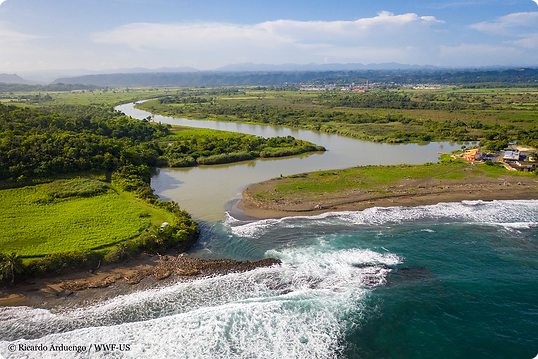
02
RIVER AND COASTAL EROSION,
LAND LOSS AND INCREASED EXPOSURE TO STORMS AND TYPHOON DISASTER-RELATED RISKS
Without sufficient sand to replenish channels and coastal barriers, deltas and coastal zones become more exposed to the harmful effects of extreme weather events. As the frequency and intensity of storms and typhoons increase, unsustainable sand mining is diminishing natural resilience. Keeping sand in the ecosystem is a cost effective tool for adaptation.

03
ECOSYSTEM DEGRADATION
The loss of sand from riverine systems contributes to riverbed deepening, riverbank erosion and coastal retreat, leading to loss and alteration of a wide range of ecosystem habitats. The impact on ecosystems is likely high, though more research is required to establish a solid scientific understanding of how those morphological changes affect habitats and wildlife.

04
TRANSBOUNDARY CHALLENGES
River systems are often transnational, making their management an international issue. For example: in the Mekong Delta, the sand supply originates upstream in China, Myanmar, Laos, Thailand, Cambodia, and other areas of Viet Nam. This means that international cooperation is necessary to manage sediment flows across borders. Not all transboundary rivers have river basin organizations, and when they exist they may not consider sediment within their mandate as a shared resource. Or they may monitor suspended sediment (mainly silt and clays) and not include the specific tools and processes needed to manage sand. Even if sand is included, it is usually only from a water resources perspective, and rarely engages all relevant agencies and stakeholders or have appropriate policies.

05
NATIONAL CHALLENGES
Sand is a cross-cutting strategic resource that is relevant to many stakeholders across a country's private and public sectors. Different ministries and agencies are competent, yet rarely are there internal coordination mechanisms between administrative divisions or sectors — or ad hoc coordination between central governments and local authorities. In most countries, sand concessions are managed by local sub-national level authorities, often operating with limited capacity, while natural resource policies are national. A Sand Budget creates awareness about the need for improved coordination.
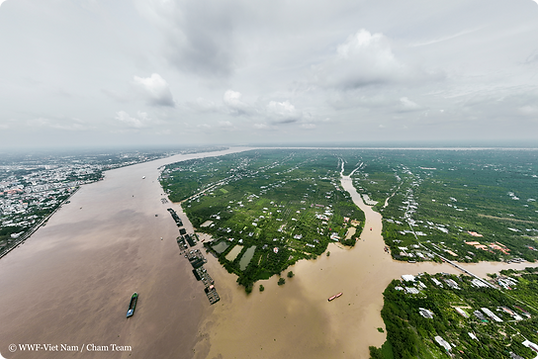
06
POLICY URGENCY
Rivers and sedimentary coasts concentrate a large part of the world’s human population, food production, manufactures and are hot spots for biodiversity, yet are the most exposed to the effects of climate change. Addressing sand mining — as part of a holistic, systemic disaster risk reduction strategy — is a cost-effective way to address the very real and immediate climate exposure of major supply chains and some of the planet’s most vulnerable communities. The sustainability of entire landscapes cannot be guaranteed if their vertical and horizontal growth is compromised: in other words, if the sediment contribution from river systems cannot keep up with erosion, subsidence, global sea level-rise and ocean-forcing agents.
For example: Under a "business-as-usual" scenario, the Viet Nam Mekong Delta’s active sand deposits could disappear by 2030–2040 — and that would cause an existential threat to people and nature. Other riverine systems may have faster or slower sand depletion rates — however, without a calculated Sand Budget, sand management policies

are effectively working in the dark. The Viet Nam Mekong Delta Sand Budget has shown how there is a real need to establish the different values that sand brings from economic, security and biodiversity perspectives, and to create and implement processes to consider these values in policy-making and execution.
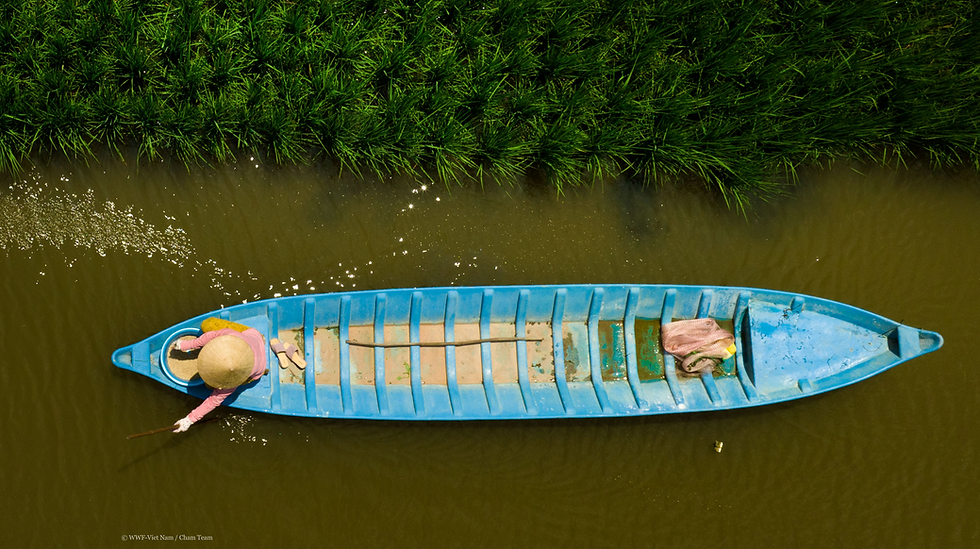
As additional Sand Budgets are created for other global river systems, new challenges, implications and opportunities will arise. The Sand Budget concept is intended to be flexible and informed by the inputs and experiences of stakeholders and practitioners.
COMPONENTS OF A SAND BUDGET
The ultimate goal of a Sand Budget is to provide evidence-based data and knowledge that can be used to inform sand management policies.
APPLICATIONS
Sand Budgets can serve as a powerful decision-making support tool — by mapping bedload transport volume and the mobile sand layer, Sand Budgets can serve as a key input to river geomorphology stability (RGS) plans used to assess and address issues related to river channel stability and sediment dynamics in river deltas. An RGS plan has been successfully applied in the Mekong Delta as a pilot project to provide recommendations to managers and legislators to preserve the morphology of river channels and associated socio-economic values. For example, by prohibiting sand mining in areas identified as undergoing significant changes or with a high risk of riverbank erosion.

© WWF-Viet Nam / Cham Team
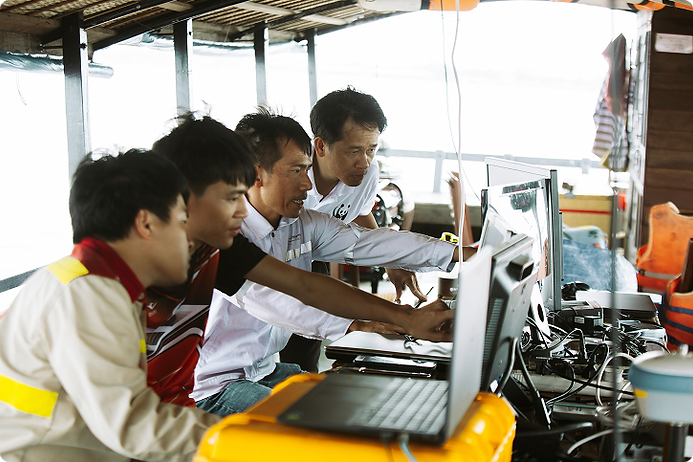

© WWF-Viet Nam / Cham Team
Effective sand management is a nature-based solution (NbS) — Preserving riverbed sand can be an effective NbS for responding to climate change, protecting riverbeds and banks from erosion, maintaining elevation and reducing saltwater intrusion to deltas.
Management of sand to preserve river forms and associated ecosystems — and prevent excessive erosion — fits the commonly agreed definition of NbS and can be included in a country’s NbS portfolio as a climate change response. Keeping enough sand in riverbeds and coastal zones can be a very cost effective joint climate adaptation and biodiversity conservation strategy.
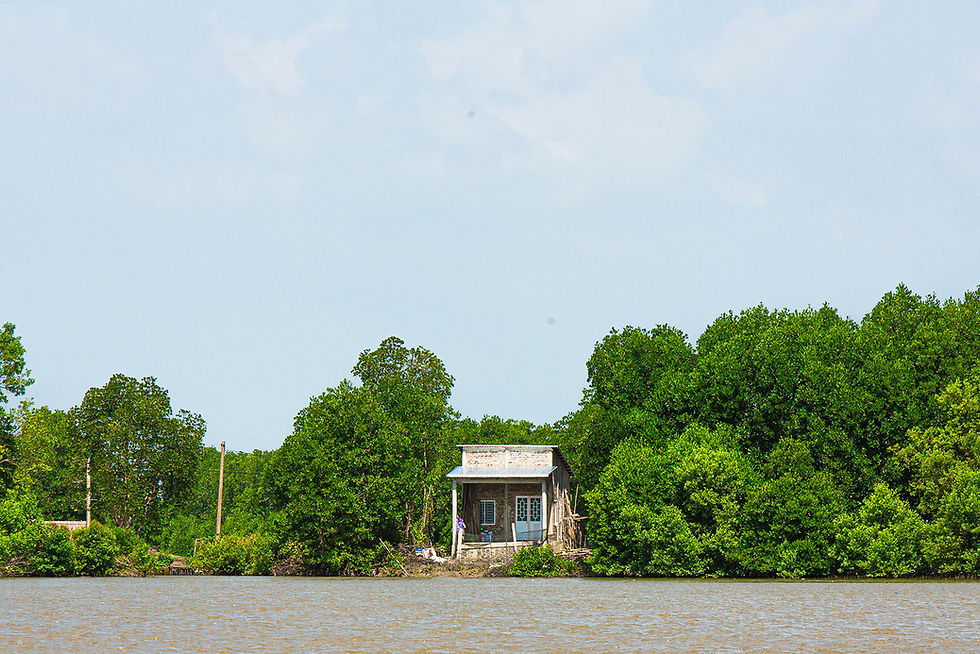
A POWERFUL TOOL FOR RIVER RESILIENCE
Sand Budgets can be used for integrated planning with emphasis on natural resources, environment management and disaster risk reduction.

A WELL-FORMULATED SAND BUDGET PROVIDES AWARENESS AND UNDERSTANDING OF THE STRATEGIC VALUES OF SAND — A CRITICAL BUT OFTEN OVERLOOKED RESOURCE — AND CAN SERVE AS A TOOL FOR TRACKING HOW IT MOVES THROUGH, IS STORED IN, AND EXITS AN ECOSYSTEM.
The Viet Nam Mekong Delta pilot study has provided us with a sobering picture: sand is being lost much faster than it can be replenished. Without urgent interventions, the consequences will ripple outward — exacerbating erosion, destabilising coasts and riverbanks, worsening saltwater intrusion, accelerating biodiversity loss, and undermining food security and economic growth for millions.
Maintaining a healthy Sand Budget requires not only local action — like regulating sand mining — but also regional and international cooperation, especially across the Mekong River Basin and other transnational river systems. Developing a Sand Budget is not merely a scientific exercise — it is a strategic necessity to ensure the future resilience of our rivers and the people that rely on them.
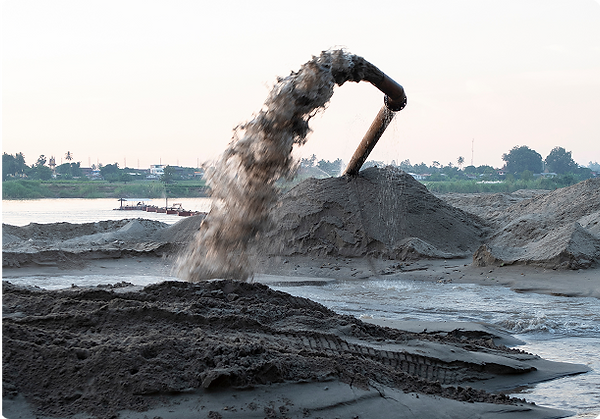
Contact us to learn more about how to develop a sand budget for your river system today!
-
Deltares led on the consortium to develop the Sand Budget, along with the Center for Environmental Fluid Dynamics (CEFD) as the co-applicant, and the Southern Region Hydro-Meteorological Centre (SRHMC) and the Institute for Water Education (IHE Delft) acting as subcontractors.
WWF® and ©1986 Panda Symbol are owned by WWF. All rights reserved.
_WW1269115%202.png)





